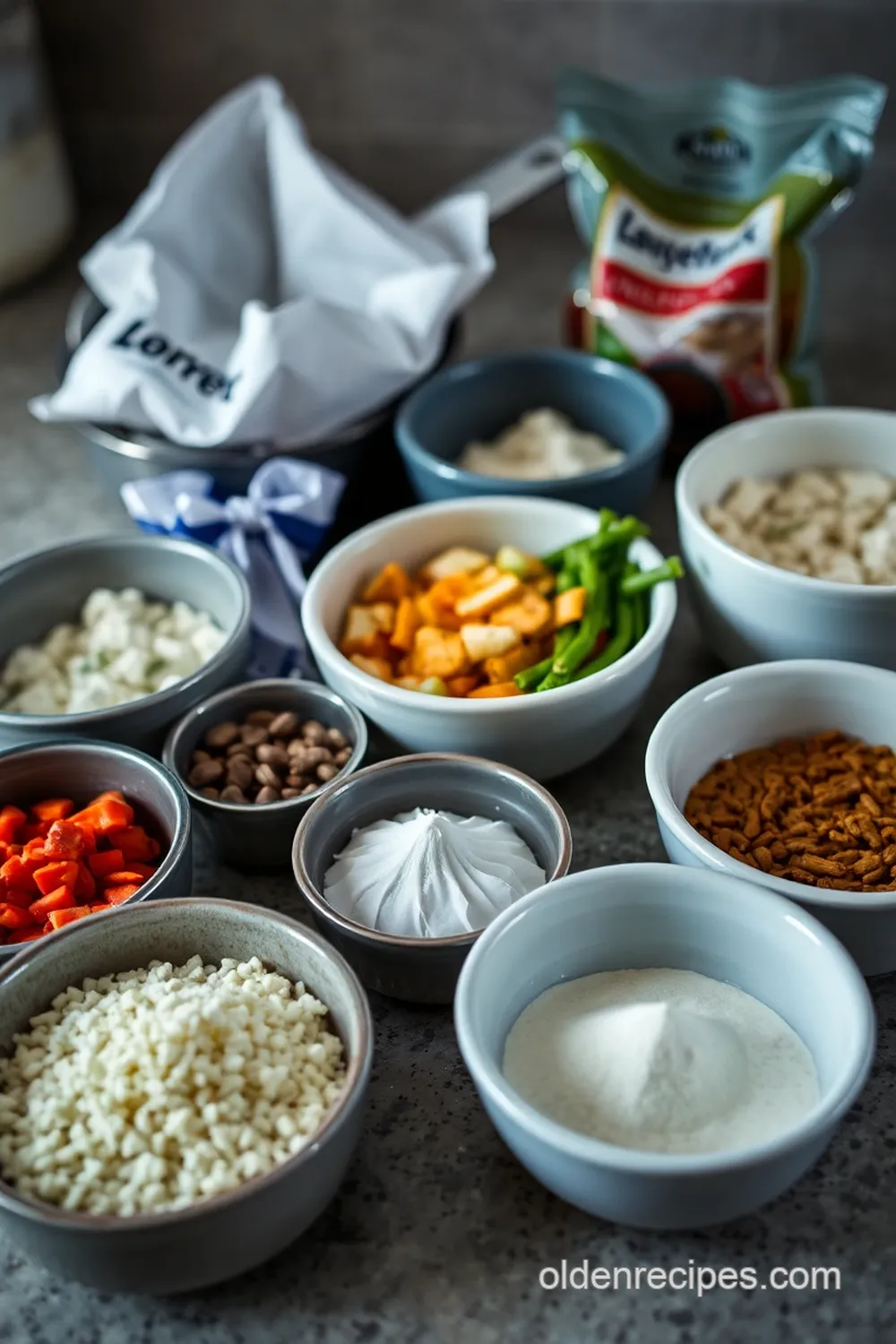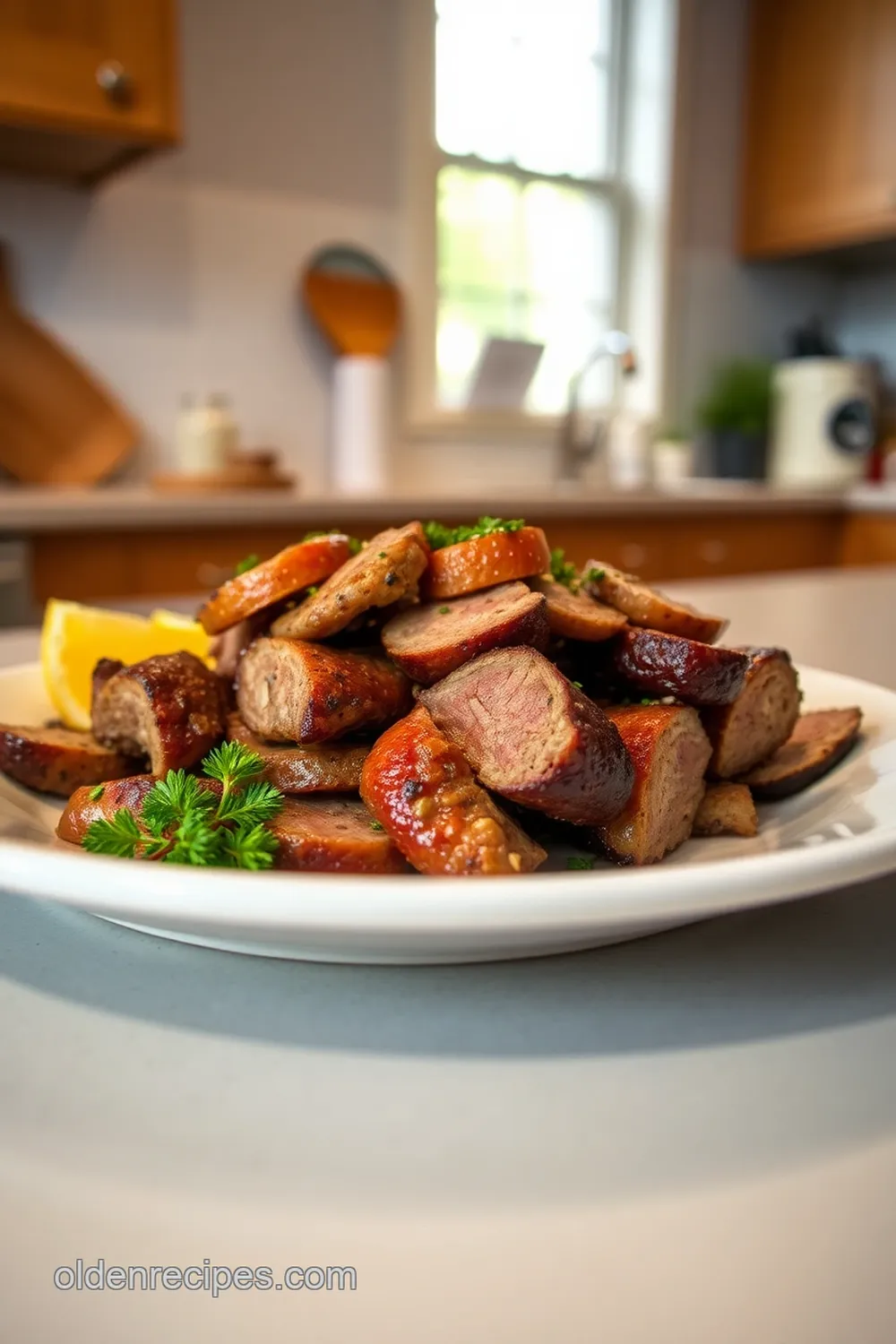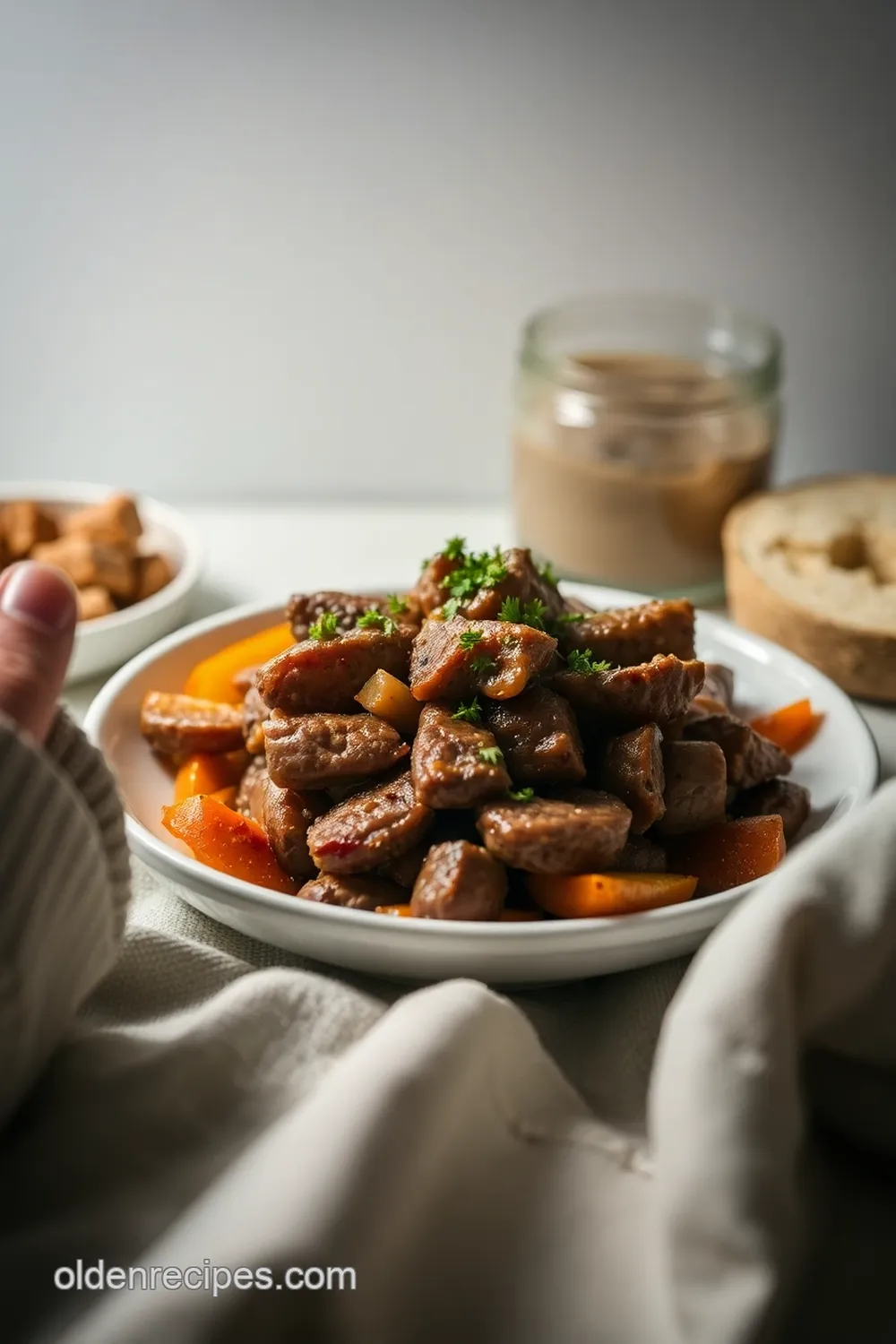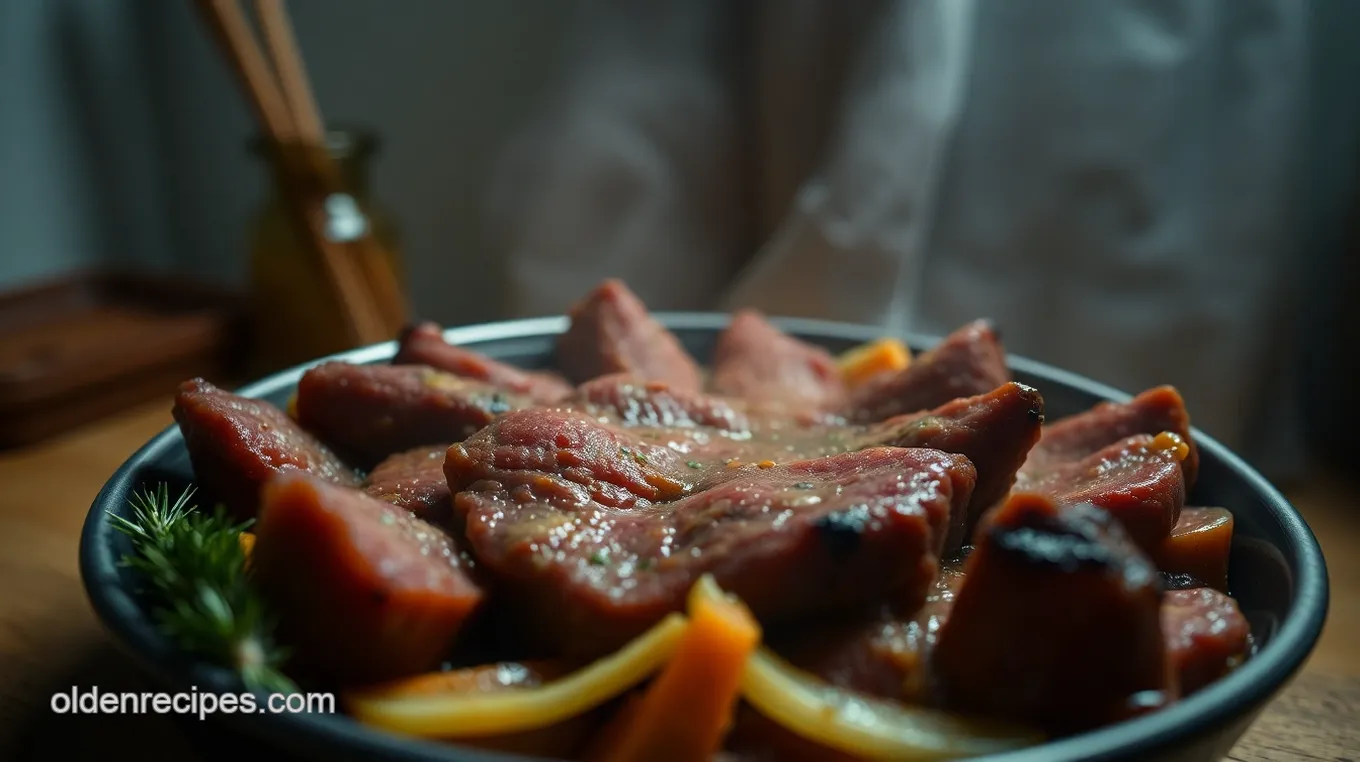Table of Contents
You know that feeling when you take a bite of perfectly cooked meat, and it practically melts in your mouth? i still remember the first time i had that experience.
I was at my buddy’s barbecue, and he served up the juiciest, most flavor-packed chicken i’d ever tasted. when i asked him his secret, he grinned and said it was his brine recipe .
That was my personal lightbulb moment—had i been missing out on the juicy goodness of brined meats all along?
Brining is more than just a fancy cooking technique; it can actually transform your meals! if you’ve been wondering how to take your chicken, turkey, or even pork to the next level, you’re in the right place.
This method not only locks in moisture, but also enhances flavors with delightful infusions. seriously, once you learn how to brine chicken or turkey, it’ll be your go-to for every gathering!
Recipe Overview
Brining has been around for ages, tracing its roots back to ancient civilizations that knew a thing or two about preserving food.
Today, the process is making a serious comeback, especially in the realm of home cooking. everyone wants juicy meats, right? whether you’re hosting thanksgiving or just want to make a weekend dinner special, this method is as relevant now as it was back then.
When it comes to time, don’t panic! you’ll need about 10 minutes to whip up the brine and then just let it chill for an hour.
The actual brining times for your meat can range from 1 to 12 hours, depending on the type of meat.
And the best part? it’s super easy! if you can mix ingredients and soak meat, you’re golden.
Now let’s talk costs. this brine uses simple brine ingredients that you probably already have at home. we’re talking water, kosher salt, and a few pantry staples.
It’s an affordable way to elevate your meals. this recipe yields enough brine for about 4 pounds (roughly 1.8 kg) of meat, which is perfect for family feasts or grilling with friends.
Key Benefits
So why is brining a big deal? for starters, it has some real health benefits and nutritional highlights. brined meats tend to be lower in fat because they retain moisture during the cooking process.
This means you can savor every juicy bite without the guilt.
Let’s say you’ve got a gathering coming up. a turkey brine recipe like this is perfect for thanksgiving or even a summer bbq.
Not only will your meats taste awesome, but they’ll also look gorgeous on the table. and if you’re experimenting with different brining variations , you can create unique flavors that’ll have everyone asking for seconds.
Plus, think about the advantages over other cooking methods. unlike dry rubbing, which can sometimes leave your meat a bit parched, brining guarantees tenderizing meat to perfection.
So no worries about gnawing through dried-out pieces during dinner!
As i dove deeper into the brining process , i found that combining ingredients like apple cider or spices can create amazing flavor profiles.
Trust me, your taste buds will thank you. and once you get the hang of it, you’ll be sprinkling your own culinary magic everywhere.
Now that you’re all fired up to get started, let’s dive into the ingredients you’ll need! I promise you’ll find the flavors addictive and the process ridiculously simple. Happy brining, friends!

Essential Ingredients Guide: Unleash the Flavor in Your Cooking
Cooking at home shouldn’t feel like rocket science. Instead, it should be a vibe. You want to whip up something delicious without spending an eternity in the kitchen, right? Well, let’s dive into the essentials that will transform your culinary game!
Premium Core Components
First up, premium ingredients . Quality matters! When you’re dealing with herbs, spices, or even your basic pantry staples, make sure you know what to look for.
- Measurements: you’ll need about 4 cups (950 ml) of water for your brine, plus ½ cup (120 g) of kosher salt, and ⅓ cup (70 g) of brown sugar. If you prefer metric, just know it’s easy to google those conversions!
- Quality Indicators: Fresh herbs should be vibrant and fragrant, not wilted and sad. Salt? Choose kosher—it dissolves way better than table salt.
- Storage Guidelines: Dry spices? Keep them cool and dark, and they can last for years. Fresh herbs? Use them quickly or stash them in the fridge.
- Freshness Tips: For meat soaking in that savory brine, always choose cuts with a bit of marbling; it makes a world of difference.
Signature Seasoning Blend
Now, let’s chat signature seasonings . The right blend can turn even the most basic dish into something spectacular.
- Essential Spice Combinations: Think about garlic powder mixed with smoked paprika for a sweet and smoky treat!
- Herb Selections: Fresh thyme or rosemary can be heavenly when mixed in. They just elevate everything!
- Flavor Enhancers: Don’t overlook the power of garlic! It’s an aromatic superstar, ideal for the brining process.
- Regional Variations: Want to take your flavor to the next level? Add some cider for that hint of sweetness in your brining solution.
Smart Substitutions
Let’s face it, sometimes you just don’t have what the recipe calls for. No biggie!
- Common Alternatives: Run out of kosher salt? Sea salt works in a pinch; just account for the differences in density.
- Dietary Modifications: Need a paleo-friendly substitute? Skip the sugar and go for coconut sugar instead.
- Emergency Replacements: No fresh herbs? Dried works, but remember, they’re more potent—just use a third of what the recipe says.
- Seasonal Options: Using fresh citrus can make a world of difference in colder months. Add in some lemon juice to really brighten that brine!
Kitchen Equipment Essentials
You don’t need a fancy kitchen full of gadgets to be a great cook.
- Must-Have Tools: For our brine recipe, a large mixing bowl, measuring cups, and an airtight container are the bare minimum.
- Alternative Equipment Options: No whisk? Use a fork! Seriously, anything can work.
- Preparation Tips: Always prep your brine ahead of time. Let it chill while you handle the main event—your meat!
- Storage Solutions: Those old mason jars? Perfect for storing leftover spices. They add some rustic charm to your kitchen too!
Alright, folks, with these essentials under your belt, you’re ready to tackle that perfect brine recipe . remember, creating a flavor-packed brine is all about balancing flavors and knowing your ingredients.
The beauty of cooking is in the exploration—whether you’re using a pork brining method or perfecting that turkey brine recipe .
And if you’re curious about diving deeper into brining or even advancing into marinating techniques, we’ve got more juicy topics to cover! let’s move on to the instructions and really see how this brining process comes together.
Are you ready? i know i am!

Efficient Steps to Mastering Professional Cooking: Brining and Beyond
Have you ever bitten into a piece of chicken or pork that’s so juicy it practically spills flavor? that’s the magic of brining! brine recipes have been around forever, but today, we’re diving into the nitty-gritty of professional cooking, using brine techniques that’ll not just enhance your meats but also elevate your entire cooking game.
Let’s roll up our sleeves and get cooking!
Essential Preparation Steps
Before you even think about turning on the stove, it’s all about mise en place —which basically means having everything in its place.
Chop your garlic, measure your water, and keep that counter organized. here’s the deal: keep all your ingredients at hand so you’re not scrambling when that oven timer beeps.
Time management matters, folks! use a kitchen timer or your phone’s timer for each step, especially during the brining process .
Timing is everything, and that helps avoid overcooking or underwhelming meals. for instance, if you’re brining chicken, aim for 1 to 2 hours but never more than 12 hours .
Speaking of safety, remember to always wash your hands and surfaces well after handling raw meat. You don’t want a side of salmonella with your brined goodness!
Step-by-Step Brining Process
Let’s get to the good stuff—how to nail that perfect brine. Ready? Here are your clear, numbered instructions!
- Prepare the brine : in a big bowl, whisk together 4 cups of water , ½ cup of kosher salt , and ⅓ cup of brown sugar until dissolved. Toss in some smashed garlic and fresh herbs. yum!
- Chill the Brine : Allow that brine to cool at room temperature, then refrigerate for at least 1 hour . We want it nice and cold so you don’t start cooking your meat!
- Brine the meat : for this step, turkey brine recipes are a classic! submerge your meat in the cooled brine. If you’re brining pork or chicken, ensure they’re fully covered. seal that container or bag tight.
- Brining time : depending on the meat, refrigerate from 1 to 12 hours. chicken should stay in for 2 hours max, while turkey can soak up those flavors for up to 12 hours.
- Rinse and dry : after your meat’s had its salty spa day, rinse it under cold water. this removes excess salt. Pat it dry—don’t skip this step if you want that crispy skin later!
Expert Techniques for Brining
Let’s talk about some critical points. a savory brine is all about balance. use those brine ingredients wisely! go easy on salt or your meat will end up like salty cardboard.
Pay attention to your brine ratios ; proportion is key! if you want to add, say, lemon juice or cider in your brining solution , scale back on other sweeteners.
Quality checkpoints come into play during the cooking phase. use a meat thermometer! chicken should reach 165° f , while pork calls for 145° f .
Visual cues help too; look for nice browning or that crispy crust you love.
Success Strategies
Ah, here’s the kicker—common mistakes! don’t over-brine. trust me, nobody likes a mouthful of salt. and remember to let your meat rest after cooking to keep those juices inside.
Plan ahead! if you’re cooking for a crowd, think about a make-ahead option .
Quality assurance? always taste that brine before adding your meat, and tweak it to match your liking. those little adjustments make a big difference, whether you’re trying a new brining technique or cooking with brine for the first time.
Conclusion: The Journey Ahead
So there you have it! a comprehensive dive into the world of professional cooking with a killer focus on brining.
And while we’re at it, let’s keep exploring new flavors and cooking methods that’ll make your meals unforgettable.
Next up, hang tight for some additional information where we’ll dive deeper into other exciting cooking techniques and recipes. You won’t want to miss out on these flavorful adventures!

Additional Recipe Information
Pro Tips & Secrets
If you’re diving into the world of brine recipes , let me tell you—it’s a game-changer! here are some of my secret gems for success.
First off, don’t rush the brining process . if you want that juicy flavor and tender meat, patience is key. the brining times really matter, and honestly, it’s worth waiting those extra hours.
Quick tip: always start with kosher salt . it’s a brining superstar because it dissolves quickly and isn’t as salty as table salt.
You want that perfect balance, right? oh, and you can totally level up your flavors! try adding a bit of citrus juice or even switching up your brine ingredients .
A dash of apple cider can add a sweet twist that you’ll absolutely love!
Perfect Presentation
Once you’ve worked your brine magic, now it’s time to make it look pretty! plating techniques can really elevate your dish.
Try slicing your meat against the grain for those gorgeous juicy cuts. add color to your plate—think roasted carrots for that vibrant orange pop or a sprinkle of fresh herbs on top for a bit of green.
Garnish ideas? fresh thyme or rosemary sprigs not only look good but smell divine too. and don’t forget to think about color combinations —a plate with greens, browns, and whites is way more appealing to the eye.
Trust me, a little visual appeal goes a long way in impressing your dinner crowd!
Storage & Make-Ahead
Okay, so what if you want to get ahead of the game? brining can totally be done in advance! once you’ve brined your meat, wrap it tight and store it in the fridge.
Just remember, brined meat stays fresh for about 3 to 5 days in the fridge.
When it’s time to reheat, be careful! reheating instructions are simple but crucial. you want it warm throughout but avoid drying it out.
Try gently warming in the oven at a low temperature, like 275° f ( 135° c) . that way, you keep all that moisture locked in!
Creative Variations
The fantastic thing about any given brine recipe is the endless potential for creative variations ! don’t be shy—experiment with flavors.
Toss in some hot sauce for a spicy kick or swap out sugar for honey for a different sweetness. if you’re feeling adventurous, try a pork brining method with a splash of maple syrup.
And how about seasonal twists? in the fall, try adding cinnamon or cloves for a warm, cozy flavor. need to cater to dietary restrictions? this brine is flexible; it’s all about your marinating techniques and preferences.
It’s cooking with brine made utterly customizable!
Complete Nutrition Guide
Alright, let’s talk health! a properly executed brine can actually help in tenderizing meat while keeping it moist. the nutritional information for our brine is straightforward, low in calories but loaded with flavor potential.
The sodium content can seem high, so keep that in mind if you’re watching your intake.
And hey, portion guidance isn’t just for calorie counters! it helps you dish out the right amount. after all, nobody wants to face a plate that’s too much or too little.
This is all about enjoying great food without guilt!
In conclusion, cooking with brine isn’t just a technique; it’s an art form that brings flavors to life. so, step into your kitchen and start experimenting! trust in your expert brining advice , play with those spices, and enjoy every moment of your culinary journey.
You’re on your way to impressing even the pickiest eaters at your table with the juiciest, most flavorful meats they’ve ever tasted.
Happy brining!
Brine Recipe FAQs
What is the basic formula for a brine?
The basic formula for a brine typically includes a ratio of 1 cup of kosher salt to 1 gallon (4 liters) of water. This proportion helps ensure the meat absorbs enough moisture and flavor without becoming overly salty. Experiment with this basic ratio by adding sugars, herbs, and spices to customize the flavor profile to your liking.
How do I create a brine recipe at home?
To create a simple brine recipe at home, start by dissolving salt and sugar in water—use about ½ cup of kosher salt and ⅓ cup of brown sugar per 4 cups (950 ml) of water. Add aromatics like garlic and herbs for flavor, chill the mixture, then soak your meat for several hours in the brine. Remember, the longer you brine, the more flavorful your meat will be, but avoid exceeding recommended times to prevent excessive saltiness.
What is the salt-to-water ratio for brine?
The salt-to-water ratio for a basic brine is typically 1:16, which translates to 1 cup of salt for every gallon of water (4 liters). For smaller batches, like in the “Revitalizing Brine” recipe, use ½ cup of kosher salt for every 4 cups of water. Adjust according to taste, but be cautious—use less salt for delicate proteins to avoid overpowering their natural flavors.
Does brine need sugar?
Adding sugar to a brine is not strictly necessary but is highly recommended for balancing the saltiness and enhancing the overall flavor. Brown sugar, honey, or even apple cider can add a subtle sweetness and help form a caramelized crust when cooking. If you prefer a savory brine, you can omit sugar, but consider adjusting your spice blend for a rounded taste.
How much salt do I need for 1 liter of brine?
For 1 liter of brine, you would typically use about ¼ cup (approximately 75 grams) of kosher salt. This ratio helps ensure the brine effectively penetrates the meat to improve flavor and moisture retention. For best results, always dissolve the salt completely in the water and consider adding sugar and aromatics as suggested in the “Revitalizing Brine” recipe.
What are some variations I can try in my brine recipe?
There are countless variations you can experiment with in your brine recipe! Try incorporating different sweeteners like honey or maple syrup, or add unique flavors from citrus juices, like lemon or orange. Additionally, swapping out herbs for dill, rosemary, or even spices like cumin can give your brine a personalized touch. Just remember to keep your primary salt-to-water ratio consistent for optimal results.

Revitalizing Brine: The Key to Juicy Meats
Equipment
- Large mixing bowl or pot
- Whisk or Spoon
- Measuring cups and spoons
- Airtight container for brining
- Refrigerator
Ingredients
- 4 cups water approximately 950 ml
- 0.5 cup kosher salt approximately 120 g
- 0.33 cup brown sugar approximately 70 g
- 1 tablespoon whole black peppercorns approximately 15 g
- 4 cloves garlic smashed
- 3-4 sprigs fresh thyme
- 2 bay leaves
- 0.25 cup lemon juice optional, approximately 60 ml
- 1 cup apple cider optional, approximately 240 ml
Instructions
- In a large mixing bowl or pot, combine water, kosher salt, and brown sugar. Whisk until fully dissolved.
- Incorporate black peppercorns, smashed garlic, fresh thyme, and bay leaves into the brine. Add lemon juice or apple cider if desired.
- Allow the brine to cool to room temperature, then refrigerate for 1 hour.
- Place the meat in an airtight container or resealable bag. Pour the cooled brine over the meat, sealing tightly.
- Refrigerate the brined meat for 1-12 hours, depending on meat type and size.
- After brining, remove the meat and rinse undercold water to remove excess salt. Pat dry with paper towels.
